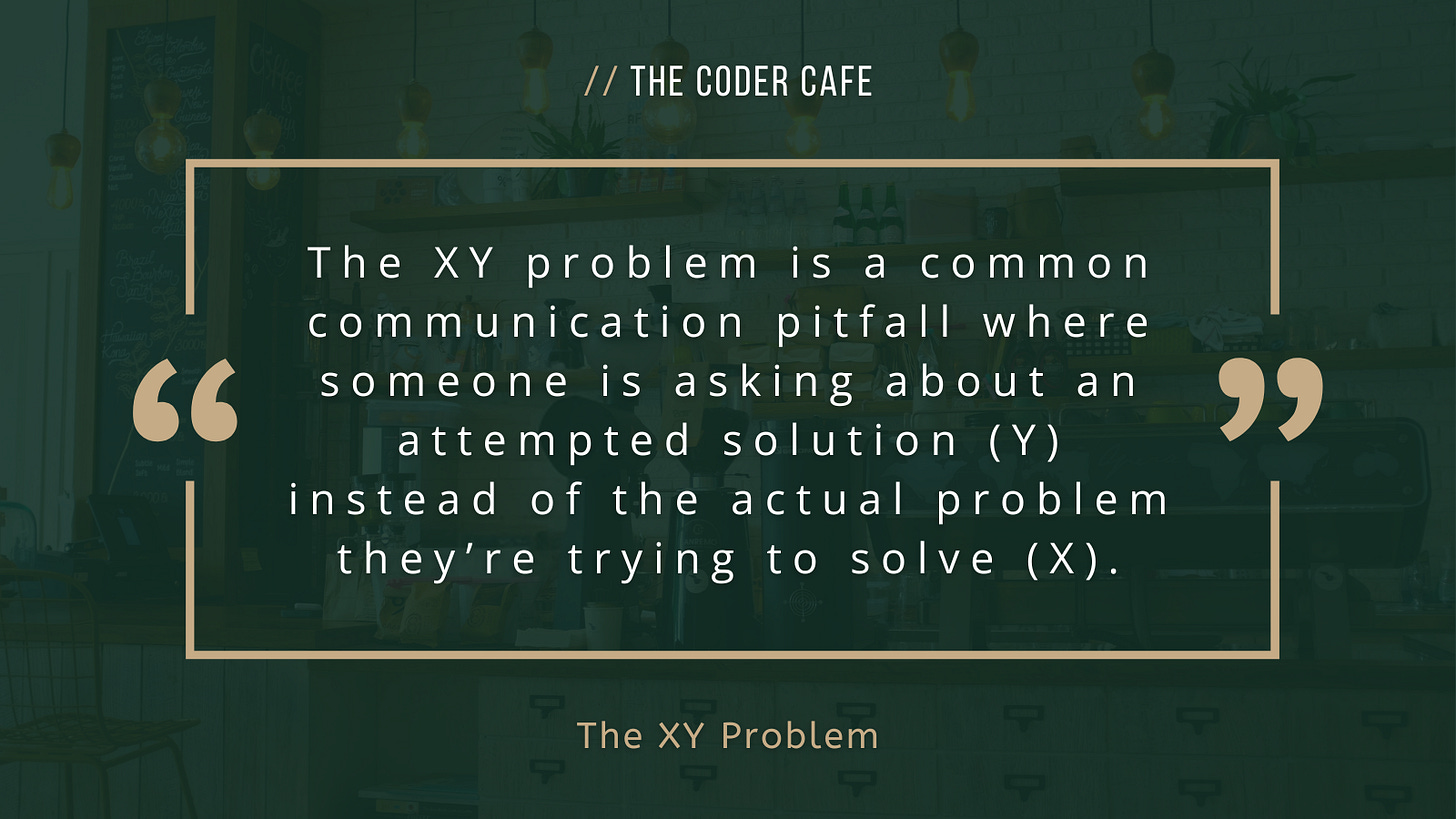📅 Last updated: March 9, 2025
Hello! Today, let’s talk about a common communication problem: the XY problem.
The XY problem is a common communication pitfall where someone is asking about an attempted solution (Y) instead of the actual problem they’re trying to solve (X).
Here’s how it typically plays out:
We face a problem X.
We don’t know how to solve X, so we’re trying to get a working solution Y.
Y doesn’t work so we’re asking for help about Y.
Helpers focus on Y, but because Y might not make sense or isn’t the right approach, they struggle to help.
After many back-and-forth, helpers realize the real problem is X, and Y wasn’t a suitable solution.
The issue with the XY problem isn’t that we’re trying to solve X with Y. Instead, the issue arises when we ask about Y without including the context of X. The XY problem can lead to wasted time and effort trying to address a secondary problem and even frustration for the helpers.
Here’s an example of a less helpful way to ask for help:
I’m facing an issue with a regexp:
`^[^@]+@[^@]+\.[^@`. For some reason, my system reports a parsing error. ← YCan you please help me out?
A better version includes the context of the original problem:
I’m facing an issue with a regexp: `
^[^@]+@[^@]+\.[^@`. For some reason, my system reports a parsing error. ← YFor context: I’m trying to validate customer email addresses using a regex. ← X
Can you please help me out?
By sharing the context X, perhaps the helper might suggest a better solution, such as using an existing email validation function, which could save time and effort on both ends. Or perhaps the regex approach was valid, in this case adding the context is also more helpful.
To prevent the XY problem:
When asking for help, always include the context of what you’re trying to solve, not just the immediate issue.
If someone asks for our help without proper context, gently guide the conversation to understand the surrounding context to provide more efficient help.
💬 Have you ever faced the XY problem? Let us know in the comments.







I find myself asking about the context often, developed a bit of a spidey sense when someone comes up with a solution and I usually follow up with a "why are you trying to do this? What problem are you trying to solve". At times just pushing for some rubber ducking helps the other person a bunch.